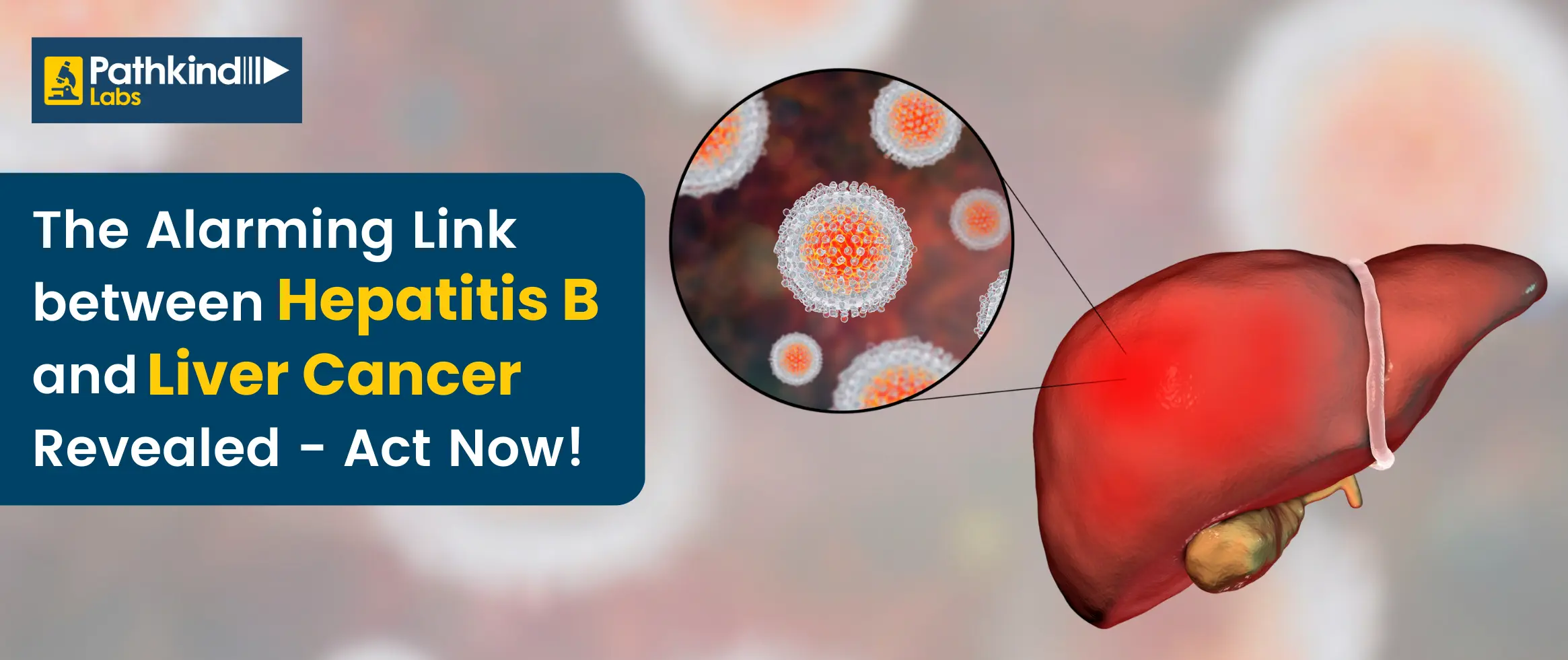Hepatitis B is liver inflammation induced by a hepatitis B viral infection (HBV). Hepatitis B testing offers information regarding present or previous HBV infection. A blood sample is used to test for Hepatitis B. Testing can be performed to identify hepatitis B, estimate its severity, and establish whether you are immune to the illness
What is the Hepatitis B Surface Antigen Quantitative Test (HBsAg)?
Hepatitis B is liver inflammation induced by a hepatitis B viral infection (HBV). Hepatitis B testing offers information regarding present or previous HBV infection. A blood sample is used to test for Hepatitis B. Testing can be performed to identify hepatitis B, estimate its severity, and establish whether you are immune to the illness.
The initial serologic marker for the hepatitis B virus that appears in serum or plasma between six and sixteen weeks after exposure is called hepatitis B surface antigen (HBsAg) (HBV). HBsAg often fades in acute infections 1 to 2 months after symptoms first occur. The establishment of either a chronic carrier status or a chronic HBV infection is indicated by the persistence of HBsAg for more than 6 months.
What is the Purpose of the Hepatitis B Surface Antigen Quantitative Test (HBsAg)?
A viral illness called hepatitis B results in liver inflammation. Results of the test might reveal current hepatitis B infection, HBV exposure in the past, or HBV immunity. To differentiate between different stages of HBV infection, evaluate prognosis (most data to date have been for patients with genotype B or C infection and HBeAg-negative infection), monitor response to treatment with pegylated interferon (peg-IFN) or nucleus (t)ide analogues (NAs), and inform decisions regarding the length of treatment, it may be helpful to quantify HBsAg.
A doctor could request hepatitis B testing for the following reasons:
HBV screening: Screening tests look for diseases before a person exhibits any symptoms. Hepatitis B frequently has no symptoms, therefore screening for the condition allows for early discovery so you can get treated and prevent unintentionally infecting others.
Diagnosing and assessing HBV infection: Hepatitis B testing can determine if you currently have the virus, whether it is acute or chronic, and whether you are contagious.
Testing for hepatitis B can reveal if you are immune to the disease either as a result of receiving the HBV vaccine or having recovered from a previous infection. Testing for hepatitis B can also be used to determine if vaccinations were effective in generating immunity and to determine who is most at risk of HBV reactivation.
Following a hepatitis B diagnosis, testing may be used to track the condition, identify complications, and gauge a patient's response to therapy.
What does the Hepatitis B Surface Antigen Quantitative Test (HBsAg) Diagnose?
Testing for hepatitis B looks for HBV genetic material, antibodies, or antigens. HBV antigens are components of the virus that activate your body's immune system. In reaction to HBV, the immune system produces chemicals called antibodies. Initial hepatitis B testing assesses antibodies and HBV-related antigens, such as:
- Hepatitis B surface antigens (HBsAg) are proteins that are found on the outside of HBV. Both an acute and a chronic hepatitis B infection can cause the proteins to be found in high amounts. This test may be used to identify both acute and chronic HBV infections as well as to screen for them.
- Anti-HBs, or surface antibodies to hepatitis B: The body spontaneously develops surface antibodies in response to HBsAg after a few weeks or months. Finding anti-HBs indicates that you have healed from hepatitis B and are no longer susceptible to the illness. Those who have already been exposed to HBV, even with the vaccinated, contain these antibodies as well.
- Total hepatitis B core antibody (anti-HBc): Hepatitis B core antibodies become detected as soon as you start to experience hepatitis symptoms and last for the rest of your life. The IgM and IgG anti-HBc antibodies are the two forms of anti-HBc antibodies that are detected by this test.
- IgM anti-HBc, the IgM hepatitis B core antibody, is the only antibody that can be found using this test. Only acute hepatitis B infections that occur within six months after the first infection show IgM Hepatitis B core antibodies.
Why Do You Need an Hepatitis B Surface Antigen Quantitative Test (HBsAg)?
For some groups with a higher risk of infection, hepatitis B tests are advised as an HBV screening tool. Hepatitis B testing may be advantageous for you if you:
- Pregnancy
- not immunised against hepatitis B
- are infected with HIV
- Use injectable medications
- are at risk of contracting HBV because of sex exposure
Testing is frequently done on people who have symptoms that might be related to hepatitis B. Hepatitis B signs and symptoms include:
Fatigue and dark urine
- Fever
- Stools in shades of clay or grey
- Appetite loss, nausea, or vomiting
- Pain in the abdomen or joints
- Having yellow eyes and skin
Preparation and Procedure of the Hepatitis B Surface Antigen Quantitative Test (HBsAg)
Prior to the hepatitis B test, no specific preparation is necessary. It's crucial that you let your doctor know about all medications you're taking, including both prescription and non-prescription ones.
Collecting a blood sample requires multiple processes for laboratory-based testing:
- Finding the right vein, usually in the arm or hand
- Increase blood flow by tying a tourniquet around the upper arm.
- Use an antiseptic swab to clean the puncture site
- drawing blood into a vial linked to a tiny needle and a vein
- Blood collection typically takes five minutes.
When the blood sample has been taken, the puncture site is covered with gauze or a bandage. After a skin puncture or blood test, you are free to do anything you choose.
Understanding the Hepatitis B Surface Antigen Quantitative Test (HBsAg) Results
Interpretation
It's crucial to consult a doctor or expert when interpreting test results since hepatitis B testing can be utilised for a variety of objectives. Test results are often analysed together. Initial hepatitis B test results may be interpreted in a variety of ways, including:
- This test measures the amount of hepatitis B surface antigen (HBsAg) in serum between 0.005 and 150 IU/mL.
- A result of 0.005 IU/mL means that the serum samples contain HBsAg but at a level below 0.005 IU/mL. (The lower limit of quantification).
- A result of >150 IU/mL means that the serum samples contain HBsAg at a level of more than 150 IU/mL. (The upper limit of quantification).
- HBsAg values of more than 100,000 IU/ml are linked to high replicative HBsAg carrier status in untreated hepatitis B e antigen (HBeAg)-positive individuals (immune tolerance).
- Hepatitis B virus DNA levels of 2000 IU/ml in blood or plasma and HBsAg levels of 1000 IU/ml in untreated, HBeAg-negative individuals are related to decreased risk for hepatocellular, high rates of spontaneous HBsAg clearance are related to HBsAg levels of 100 IU/ml.

















